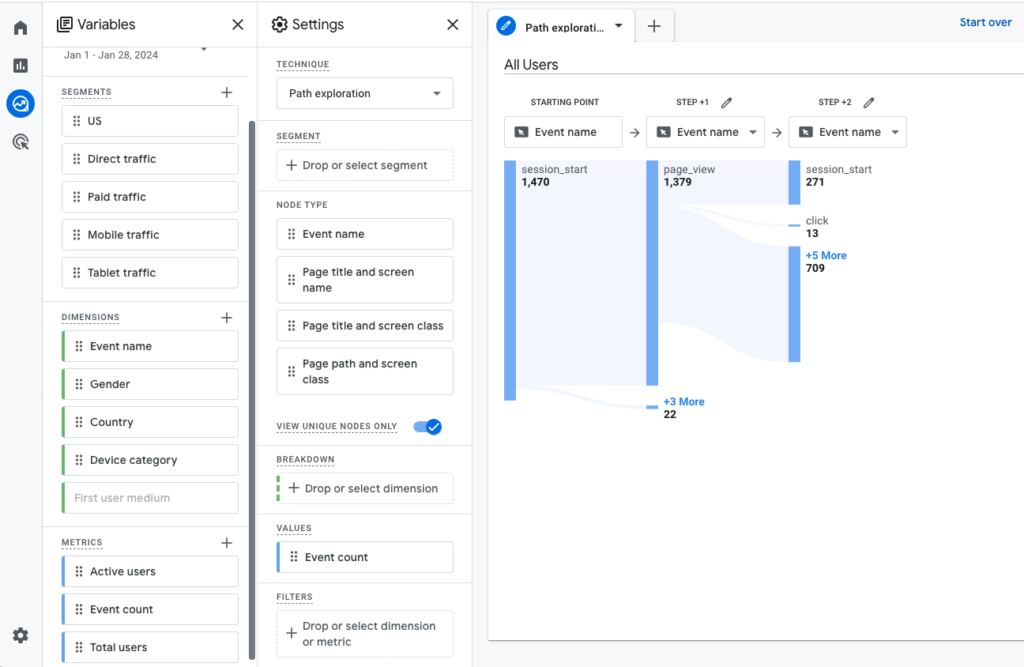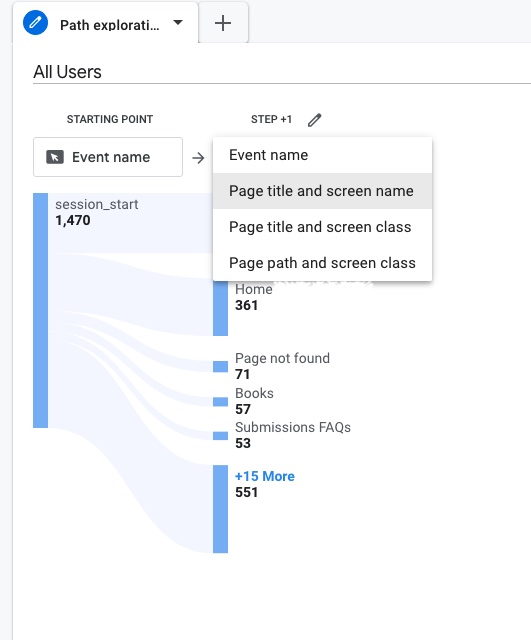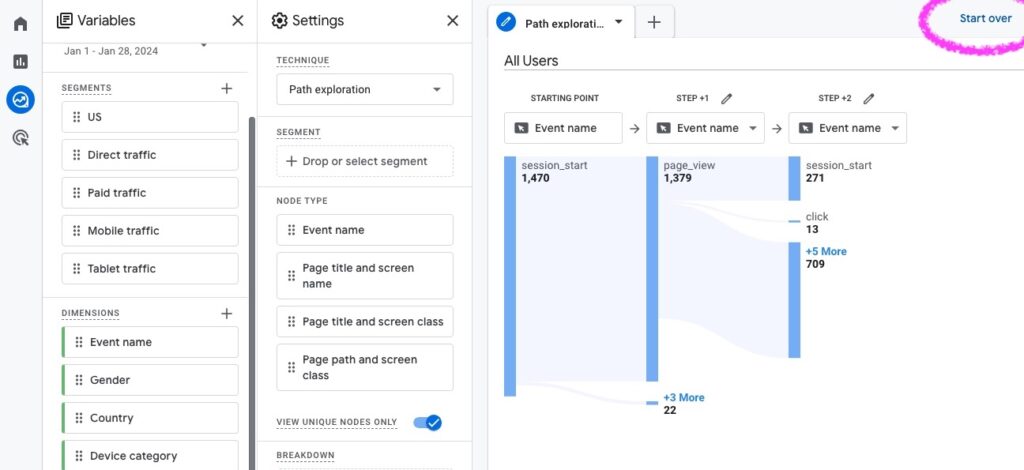
Want to see the paths visitors take through your website?
GA4 Exploration reports offer marketers advanced ways to create custom reports about their website visitors’ behaviour.
In GA4 Standard Reports, marketers can use Engagement > Pages & Screens to see what pages were visited. But in Explorations, marketers can see—not just the pages—but the common paths taken across multiple pages.
Start an Exploration
In the left-hand navigation, click on “Explore”. There are several pre-built report templates to choose from, including a blank template.
Select Path exploration to do things like:
- Find the top pages that users visit after the home page or a key landing page. This is helpful for uncovering where non-converting campaign traffic goes.
- Determine what actions users take before or after doing a particular event. This is helpful for uncovering what events or pages lead visitors to your newsletter sign up page, contest entry page, or shopping cart.
Modify the Path Exploration Template
The template displayed for Path exploration is not particularly useful. You will need to edit the dimensions and metrics if you want to look at the paths of particular users (example show only ad traffic through the site). Or you will need to modify the tree graph using the drop-downs to show Page title vs. Event name.
Here’s an example of what the starting template looks like.

On the left-hand side of the screen are the segments, dimensions and metrics used in the report.
On the right-hand side of the screen is a tree graph illustrating a series of events. In this template, you can see the starting event is “session_start”, and the following steps are the names of the most common subsequent events. As I said, the default report is not 100% useful.
You could change the Step 1 “Event name” to “Page title” in order to see, for example, when people start a session, what pages are typically in Step 1.
Use the dropdown on any step to change between “Event name” and “Page title”.

Above, you can see that many people start on the Home page.
But there are 71 who started on Page not found (404 error). That is worth investigating. You can click on “Page not found” so see the next page they visit in the path. Or you can go back to the Standard Report, Engagement > Pages & Screens to see the URLs of those 404 pages and fix the errors. Here’s how to find your 404 error pages.
Create Your Own Path Exploration Report
Typically, I start with the default template then click “Start over” to edit what appears in the tree graph.

What I like about the Path exploration report is that you can explore a path from beginning to end, or from end to beginning. For example, if I want to know where visitors go after coming to a campaign landing page, then the starting point is the landing page. But if I want to know how people get to the newsletter sign-up page, for example, then I want to explore the path from the end point (newsletter sign-up).



